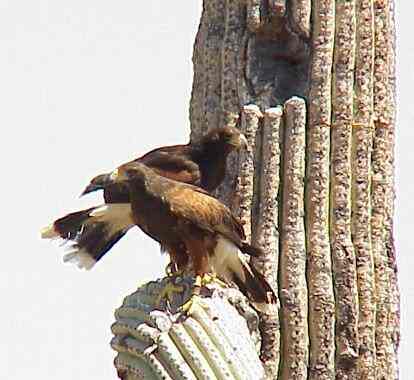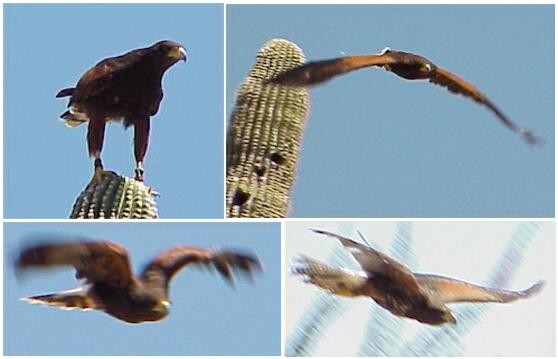HARRIS' HAWK (Parabuteo
unicinctus)
The Harris' hawk is a medium-sized, tropical or semitropical hawk, widely distributed from the US-Mexico border south to Chile and Argentina. It is one of the most remarkable birds of prey, because it has a unique behaviour pattern. These birds hunt in family groups, in much the same way as wolves hunt in packs. Each group consists of a pair, with a dominant female, and several helpers. When they sight their prey from the air, they land on the ground and take turns to scare the prey animal until it darts out from its hiding place and is captured by another member of the hunting pack. This seems to be an adaptation to flush out their prey from beneath the thorny habitats of mesquite, saguaro and semi-arid woodland without causing damage to the birds' plumage.
When the prey has been captured, the bird adopts a posture known as mantling, shielding the prey with the wings in an apparent attempt to hide it from other birds. The main types of prey include rabbits, rodents, snakes, lizards and other birds.
Achnowledgement: All images on this page were taken during a display of the behaviour of captive hawks in the Sonoran Desert Museum, Arizona.
|



